Trigger warning: This post contains a mention of suicide in the section “The Second Story”.
Getting off the beaten path
One of the fun parts of living in a popular city like Lisbon, for an extended period, is that we continue to learn about fascinating places that will never appear on any tourist’s itinerary. The guidebooks and lists of things to see, like “36 Hours in Lisbon”, will take you to the major landmarks and the hip nightclubs, but you won’t have time to experience the depth of the culture or the nuances of the city. We’ve written about this before, most recently in our post about the Maritime Museum. A week ago we visited another place off the tourist track that has a rich history – the Campo dos Mártires da Pátria, the Field of the Martyrs to the Fatherland.
It started with a casual chat
Mike is a member of a men’s group called LAGS, the Lisbon August Gentlemen’s Society. That sounds more high falutin’ than it is. It’s a group of guys, all immigrants to Portugal, who get together every Saturday morning at a local padaria for coffee, pastries, and an hour or so of casual conversation. Mike gets there maybe twice a month.
On a recent Saturday, the conversation at Mike’s table turned to an interesting monument in a local park.
Guy #1: “Have you been to the Park of the <unintelligible>?” (Mike’s hearing isn’t as good as it once was.)
Guy #2: “Yes, I have. Did you see the statue?”
Guy #1: “I did. Isn’t it amazing? People are still leaving flowers there and lighting candles, and the guy’s been dead for almost 100 years.”
Guy #3: “Where is this?”
Guy #1: “It’s near the German Embassy.”
The conversation moved to other topics, but Mike was intrigued. The following day, when we were deciding where to go for a Sunday outing, he looked it up on Google Maps. Sure enough, next to the Embaixada da Alemanha (the German Embassy), was the Campo dos Mártires da Pátria, the Field of the Martyrs of the Fatherland. With a name like that, we knew there was probably a good story to be learned. As it turned out, there were two good stories.
Where is it?
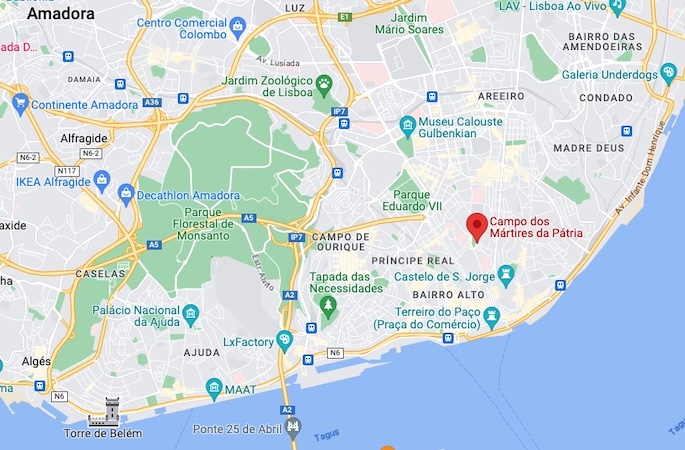
The Campo dos Mártires da Pátria is located at the top of a hill in the south central part of Lisbon. It’s sometimes referred to as Campo Santana, its earlier name. In past centuries it has been the site of a poor house and quarantine for beggars and the sick (14th C); a slaughter house (16th C); and a bull fight arena, fairground and vegetable market (19th C).
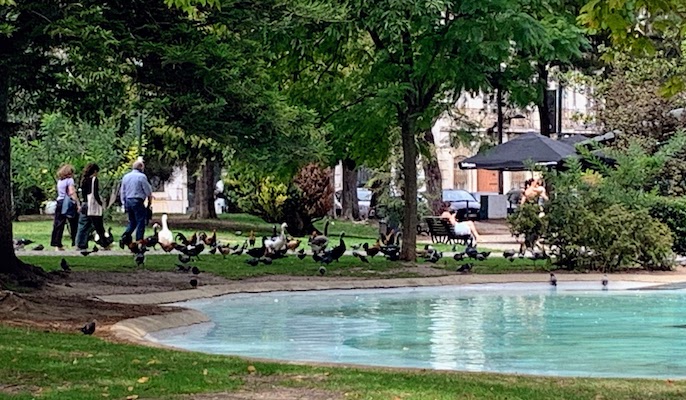
Today it is a quiet, 2.6 hectare (6.5 acre) park surrounded by a residential area known for fine homes, several hospitals, and stately government buildings. The park has tree-lined paths and lots of benches. It is also home to a large flock of chickens, roosters, ducks, and geese, who give the place a delightful bucolic quality in the middle of the city.
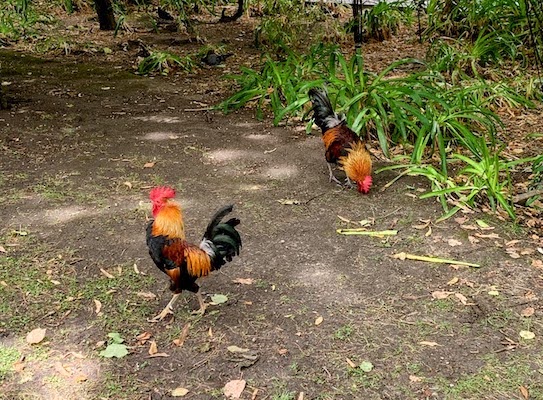
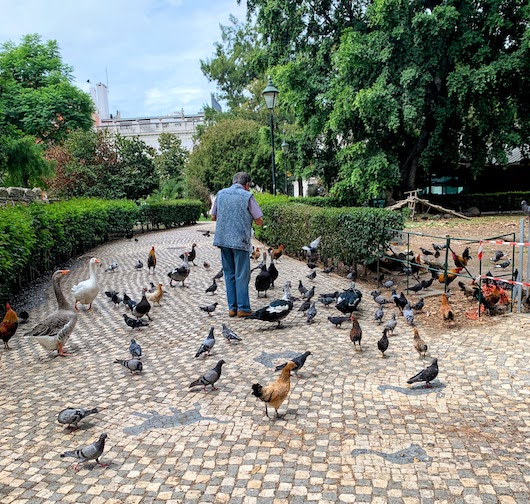
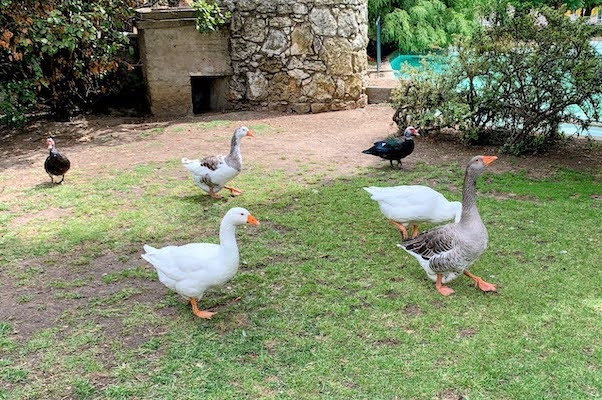
We watched the man feed the birds for a few minutes. He was generous with the chunks of bread he tossed out, except with the big geese. They got nothing. It didn’t seem to change their attitudes.
The first story: A somber history
In 1807, the French emperor Napoleon launched an invasion of Portugal as part of what became known as the Peninsular War. Rather than risk being deposed, King João VI moved the Portuguese royal court to Brazil and turned command of the Portuguese army over to the British. After the war, the victorious British commander, William Beresford, assumed greater power in Portugal, acting as a proxy for King João.
But there was unrest among the Portuguese. A plot to oust Beresford was hatched in 1817, led by General Gomes Freire de Andrade. Before they could act, the plotters were exposed, arrested, and tried for treason. On 18 October 1817, General Andrade was executed at the São Julião da Barra Fort in Oeiras, west of Lisbon. On that same day the other eleven conspirators were hanged in what is now the Campo dos Mártires da Pátria.
Popular outrage over the executions led to the Liberal Revolution of 1820 and the return of King João from Brazil. The 12 plotters were considered “martyrs to the fatherland”. In 1879 Campo Santana was renamed Campo dos Mártires da Pátria to honor those who died there. And 100 years after their death, the Camara Municipal (the city council) of Lisbon erected a large stone plaque at the site.
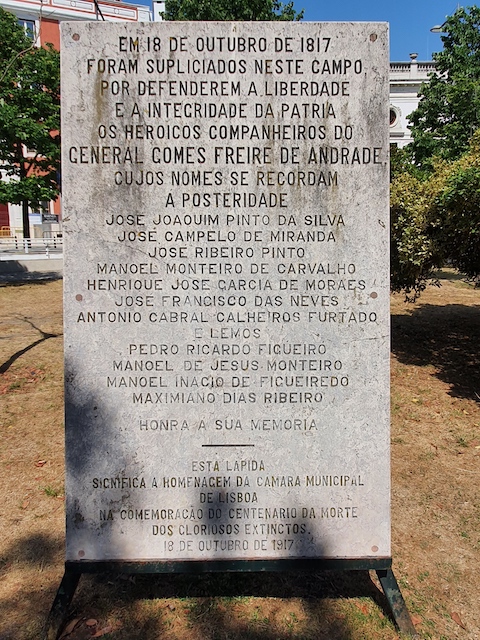
Mike’s amateur translation:
| ON OCTOBER 18, 1817 THEY SUFFERED IN THIS FIELD FOR DEFENDING THE FREEDOM AND INTEGRITY OF THE HOMELAND THE HEROIC COMPANIONS OF THE GENERAL GOMES FREIRE DE ANDRADE WHOSE NAMES ARE RECORDED FOR POSTERITY JOSÉ JOAQUIM PINTO DA SILVA JOSÉ CAMPELO DE MIRANDDA JOSÉ RIBEIRO PINTO MANOEL MONTEIRO DE CARVALHO HENRIQUE JOSÉ GARCIA DE MORAES JOSÉ FRANCISCO DAS NEVES ANTONIO CABRAL CALHEIROS FURTADDO AND WE READ PEDRO RICARDO FIBUEIRO MANOEL DE JESUS MONTEIRO MANOEL INACIO DE FIGUEIREDO MAXIMIANO DIAS RIBEIRO HONORS THEIR MEMORY THIS GRAVESTONE SIGNIFIES THE HOMAGE OF LISBON MUNICIPAL CHAMBER IN THE COMMEMORATION OF THE CENTENARY OF THEIR DEATH THEIR GLORIOUS DEATH 18 DE OUTUBRO DE 1917 |
The second story: Healing and gratitude
At the south end of the Campo we found the statue that Mike’s friends had mentioned. It is actually a large monument – about 10 meters (33 feet) tall. On top of a stone pedestal is a bronze statue of Dr. José Tomás de Sousa Martins (1843 – 1897).
The monument stands in front of the Faculty of Medicinal Sciences of the New University of Lisbon.
Dr. Sousa Martins was a pharmacist, medical doctor, scientific researcher, and medical educator. He was highly regarded in Lisbon medical circles and was well-known as an advocate for the poorest patients.
Image source: Wikimedia Commons
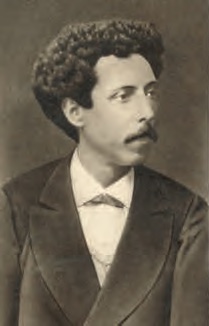
In addition to his medical practice and research, he taught at the University of Lisbon medical school. He emphasized the importance of relating to patients as human beings and often gave this advice to his students:
“When you enter a hospital at night and you hear a patient groan, go to his bed, see what the poor sick man needs, and if you have nothing else to give him, give him a smile.”
During a tuberculosis epidemic in Lisbon, he championed the creation of sanatoriums in the northern Serra da Estrela mountain range.
In 1897, Dr. Sousa Martins became ill while attending a medical conference in Venice. He was diagnosed with tuberculosis, which was later complicated by cardiac problems. He said to a friend that “a doctor threatened with death by two diseases, both fatal, should be eliminated by himself”. Shortly afterwards he injected himself with a large dose of morphine and died by suicide.
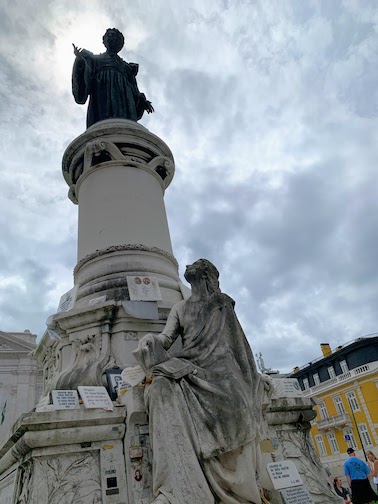
After his death, a quasi-religious cult sprang up around the doctor’s memory. Cult members believed that even in death Dr. Sousa Martins could cure illness. That belief persists to the present day. The base of the monument is surrounded by flowers and plaques thanking Dr. Sousa Martins for curing friends and family members.
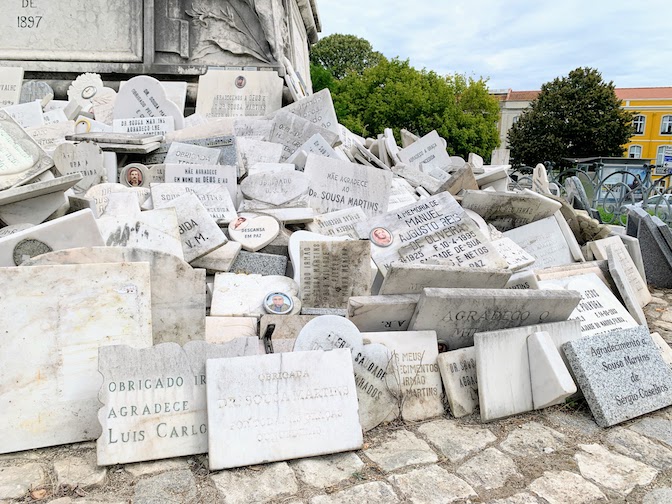
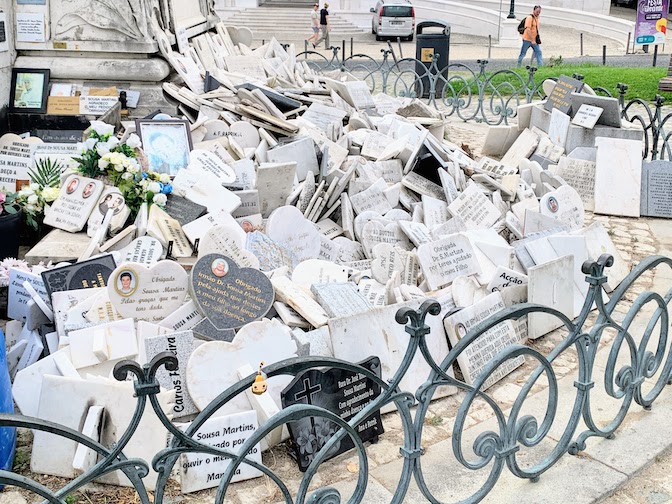
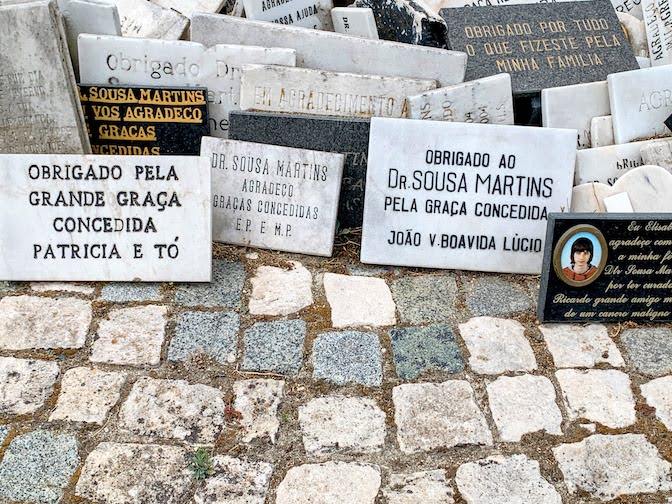
Not your typical walk in the park
When you go out for a nice Sunday stroll, you’re probably not expecting to immerse yourself in grim stories of political intrigue, executions, and suicide. (There’s a theme park idea that would never work!) And, to tell the truth, we only knew the basics of the stories when we took our walk. We learned most of the details from later reading. But our takeaway was that both stories led to some positive outcomes for the people of Portugal.
The Liberal Revolution led to the recreation of a constitutional monarchy and the return of King João VI, though in the years that followed there were other conflicts and a civil war. But those are stories for another day.
Dr. Sousa Martin’s life work advanced the science of medicine and improved the public health of the people of Lisbon and all of Portugal. His memory continues to provide hope to many people who are dealing with severe illness.
We’re looking forward to our next outing and the stories it will teach us.
Until next time / Até a próxima vez
Mary and Mike
The Cook and The Writer
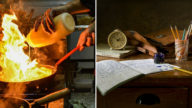
If you or a loved one are having suicidal thoughts, help is readily available.
In the United States, simply dial 988 to reach the National Suicide Prevention Lifeline, for confidential support 24 hours a day, 7 days a week. Click here fo more info.
In Portugal, there are several helplines available. Click here for a list.
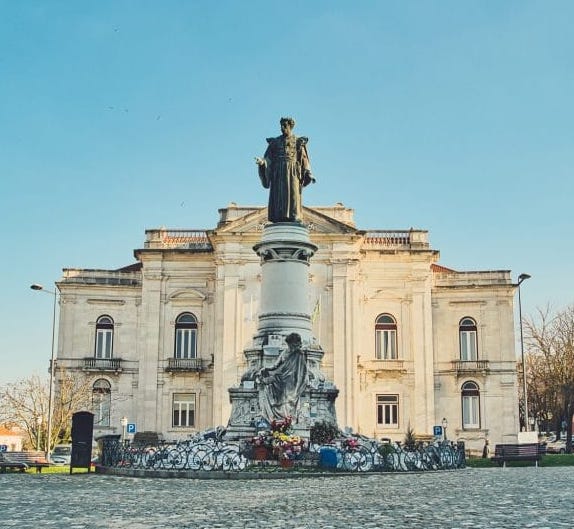

Fascinating details on that little park! I understand the German Embassy has a great biergarten as well. And I will need to be careful what I say around you at our LAGS gatherings!!
Interesting, as always! Can you provide more info on the LAGS group?